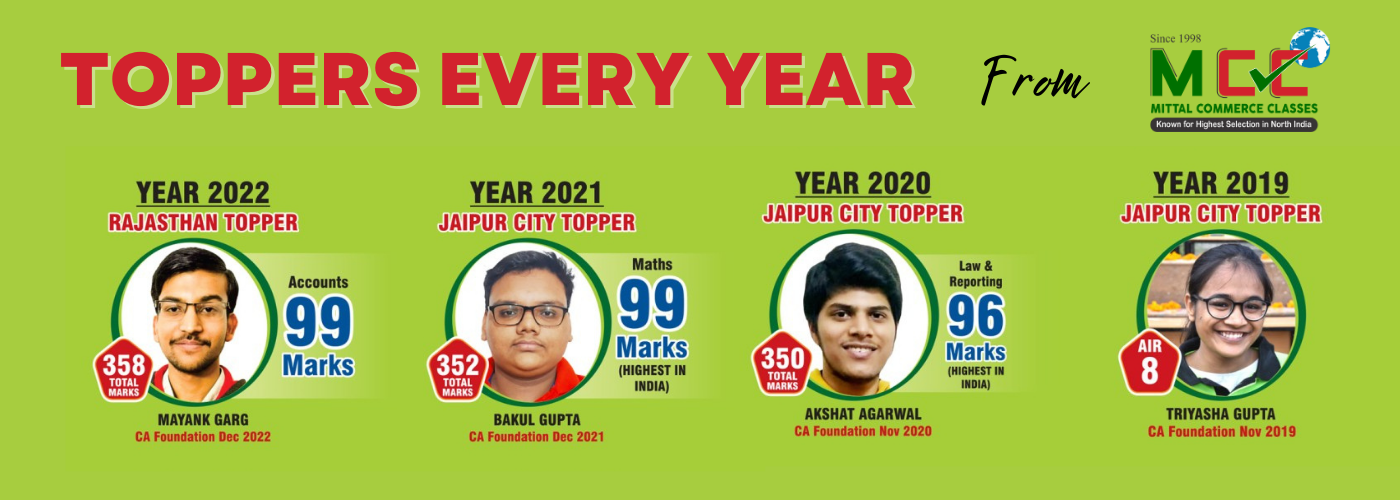Introduction
The CA Foundation exam dates for 2024 are important for candidates planning their preparation strategy. Additionally, the exam is conducted twice a year, and candidates can choose to appear in either June or December. To succeed in the exam, candidates must study the detailed paper pattern and syllabus provided by the Institute of Chartered Accountants of India (ICAI). Moreover, with a total of four papers, including CA Foundation Business Economics (Paper 4), the exam assesses candidates’ knowledge and application of various concepts. Furthermore, to pass, candidates must achieve a minimum of 40% in each paper and a total overall score of at least 50%. While Papers 1 and 2 are subjective, Papers 3 and 4 are objective. Therefore, proper time management, a thorough understanding of the syllabus, extensive practice, and strategic preparation are essential for success in the CA Foundation exam.
CA Foundation Business Economics Paper Pattern
The CA Foundation mock test paper gives an examination into the Chartered Accountant Foundation exam, carried out two times a 12 months in an offline mode with English or Hindi as the medium. The Business Economics paper, with a 2 hour length and a hundred marks, includes four papers totaling 400 marks. The objective query layout assessments candidates’ knowledge and application of principles. Mock checks can help assess instruction for the CA Foundation exam.
| Highlights | Particulars |
| Exam Name | Chartered Accountant Foundation (CA Foundation) |
| Official Website | icai.org |
| Frequency | Twice in a year |
| Medium | English/Hindi |
| Mode Of Exam | Offline |
| Paper Names | Business Economics (Paper 4) |
| Exam Duration | 2 Hours |
| Paper Marks | 100 |
| Total Exam Marks | 400 |
| Question Type | Objective |
Also Read: CA Foundation Law Paper 2024: Syllabus, Pattern, and Weightage
CA Foundation Business Economics Syllabus
The CA Foundation syllabus covers commercial business economics, covering fundamental subjects like nature, scope, primary monetary problems, call for and deliver, manufacturing and price, fee dedication, commercial enterprise cycles, countrywide profits, public finance, the cash market, worldwide trade, and the Indian financial system. Each chapter and unit specializes in particular ideas, theories, and practical programs applicable to monetary analysis within the commercial enterprise context. This based curriculum prepares applicants for the CA Foundation Econmics paper with the goal of supplying a stable knowledge of financial standards.
1: The Nature and Scope of Business Economics
- Unit 1: Introduction
- Unit 2: Basic Problems of an Economy and the Role of Price Mechanisms
2: Theory of Demand and Supply
- Unit 1: Law of Demand and Elasticity of Demand
- Unit 2: Theory of Consumer Behaviour
- Unit 3: Supply
3: Theory of Production and Cost
- Unit 1: Theory of Production
- Unit 2: Theory of Cost
4: Price Determination in Different Markets
- Unit 1: Meaning and Types of Markets
- Unit 2: Determination of Prices
- Unit 3: Price Output Determination under Different Market Forms
5: Business Cycles
6: Determination of National Income
- Unit 1: National Income Accounting
- Unit 2: The Keynesian Theory of the Determination of National Income
7: Public Finance
- Unit 1: Fiscal Functions: An Overview, Centre, and State Finance
- Unit 2: Market Failure/Government Intervention to Correct Market Failure
- Unit 3: The Process of Budget Making: Sources of Revenue, Expenditure Management, and Management of Public Debt
- Unit 4: Fiscal Policy
8: Money Market
- Unit 1: The Concept of Money Demand: Important Theories
- Unit 2: The Concept of Money Supply
- Unit 3: Monetary Policy
9: International Trade
- Unit 1: Theories of International Trade
- Unit 2: The Instruments of Trade Policy
- Unit 3: Trade Negotiations
- Unit 4: Exchange Rate and Its Economic Effects
- Unit 5: International Capital Movements
10: Indian Economy
CA Foundation Business Economics Weightage
The CA Foundation Course, particularly Business Economics (100 Marks), aims to explain economic concepts and theories, thereby enabling students to solve practical problems using financial principles. Additionally, this module fosters analytical abilities, facilitates informed decision-making, and provides essential knowledge relevant to various aspects of economic business and commerce.
| CA Foundation Business Economics Weightage (100 Marks) | |
|---|---|
| Chapters | Marks Weightage |
| 1. Introduction to Business Economics
Meaning and scope of Business Economics Basic Problems of an Economy and Role of Price Mechanism. |
5% |
| 2. Theory of Demand and Supply
Meaning and Determinants of Demand, Law of Demand and Elasticity of Demand – Price, Income and Cross Elasticity Theory of Consumer’s Behaviour –Indifference Curve approach Meaning and Determinants of Supply, Law of Supply and Elasticity of Supply, Market Equilibrium and Social Efficiency. |
10% |
| 3. Theory of Production and Cost
Meaning and Factors of Production, Short Run and Long Run Law of Production – The Law of Variable Proportions and Laws of Returns to Scale, Producer’s Equilibrium Concepts of Costs – Short -run and long -run costs, Average and Marginal Costs, Total, Fixed and Variable Costs |
10% |
| 4. Price Determination in Different Markets
Market Structures: Perfect Competition, Monopoly and Monopolistic Competition. Using Game Theory to study Oligopoly . Price Determination in these Markets Price- Output Determination under different Market Forms |
15% |
| 5. Determination of National Income
a) Macro Economic Aggregates and Measurement of National Income. b) Determination of National Income: Keynes’ Two Sector Basic Model, Three Sectors and Four Sectors Models |
15% |
6. Business Cycles
|
5% |
7. Public Finance
|
10% |
8. Money Market
|
10% |
9. International Trade
|
10% |
| 10. Indian Economy
(Before 1950- Chanakya and Nand Vansh, OECD Paper (1950-1991), Basic knowledge 1991 Onwards |
10% |
Must Read: CA Foundation Accounts Paper 2024: Syllabus, Pattern & Study Material
CA Foundation Business Economics Passing Criteria 2024
The CA Foundation Exam 2024 imposes specific standards on applicants. Firstly, they must reach a minimum of 40% in each paper. Additionally, they are required to achieve a maximum of 50% of the entire mixture across all papers. Papers 1 and 2 entail subjective responses, necessitating accurate, more than one-preference solutions. Conversely, Papers 3 and 4 entail objective questions, demanding detailed answers. To maximize performance, candidates should thoroughly understand the syllabus, practice significantly, and master each objective and subjective query. Moreover, adhering to a disciplined study routine can significantly enhance their chances for success.
Preparation Tips for the CA Foundation New Syllabus 2024
- Study the syllabus: Get a stable hold of the CA Foundation New Syllabus 2024.
- Begin your preparations early, allowing sufficient time for revision and practice.
- Use the Right Study Materials: The ICAI gives a look at materials for the CA Foundation on its website.
- Additionally, do not forget to use trusted books to highlight your expertise.
- Mock Tests: To mirror the sensation of taking a real examination, practice with mock examinations.
- ICAI gives CA Foundation mock test paper on its website that are excellent for improving your exam talents.
- Time Management: Make a take a look at plan that permits sufficient time for each topic and problem.
Frequently Asked Questions (FAQs)
How many subjects are there within the CA Foundation examination in 2024?
There are 4 subjects inside the CA Foundation exam in 2024.
What are the passing marks in CA Foundation out of four hundred?
To bypass the examination, a candidate should achieve at least forty marks on every paper. Additionally, they must accumulate a total of 200 marks out of 400.
How many hours do CA rankers have a look at?
Students are advised to invest 12–13 hours daily in their research, make an effort to complete the path in advance of the timetable, and be aware of practice checks, revision papers, and previous year query papers.
Also Read:
CA Foundation Maths Paper 2024: Syllabus, Pattern, and Study Material
Understanding CA Foundation Pass Percentage and Exam Insights














